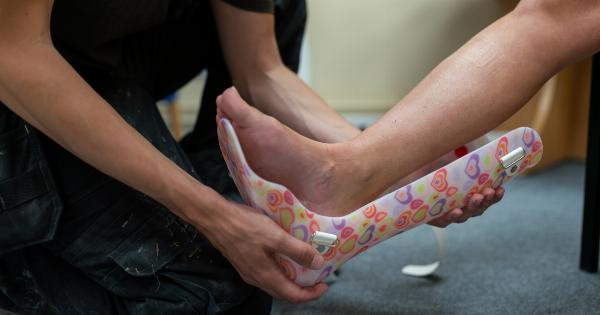Metatarsalgia is a condition characterized by pain and inflammation in the ball of the foot. It is a common foot problem that affects the metatarsal bones, which are the long bones in the middle of the foot connecting the toes to the ankle.
Metatarsalgia typically occurs as a result of increased pressure and stress on the metatarsal bones.
Causes of Metatarsalgia
There are several possible causes of metatarsalgia:.
-
High-impact sports and activities that put excessive pressure on the feet, such as running or jumping.
-
Ill-fitting footwear, including shoes that are too tight, narrow, or have inadequate support.
-
High heels or shoes with a narrow toe box that compress the toes together.
-
Excessive body weight, which can increase pressure on the feet.
-
Certain foot abnormalities, such as a high arch or a second toe longer than the big toe, which can alter weight distribution.
-
Stress fractures or other injuries to the metatarsal bones.
-
Joint disorders or arthritis.
Symptoms of Metatarsalgia
Common symptoms of metatarsalgia include:.
-
Pain and tenderness in the ball of the foot.
-
Aching or burning sensation in the toes.
-
Sharp or shooting pain that worsens with activity.
-
Numbness or tingling sensation in the toes.
Diagnosis
To diagnose metatarsalgia, a healthcare professional will typically perform a physical examination of the foot and ask about symptoms and medical history.
Additional diagnostic tests, such as X-rays or MRI scans, may be ordered to rule out other possible causes of the foot pain.
Treatment Options
The treatment of metatarsalgia usually involves a combination of conservative measures. These options may include:.
-
Resting and avoiding activities that worsen the pain.
-
Icing the affected area to reduce inflammation.
-
Wearing properly fitted, supportive footwear with cushioned insoles.
-
Using metatarsal pads or orthotic inserts to relieve pressure on the ball of the foot.
-
Taking over-the-counter pain medications, such as ibuprofen or acetaminophen.
-
Physical therapy exercises to strengthen and stretch the muscles in the foot.
-
Avoiding high-impact activities until the pain improves.
Prevention Tips
To prevent or reduce the risk of developing metatarsalgia, consider these tips:.
-
Wearing well-fitting shoes with adequate cushioning and support.
-
Avoiding high heels or shoes with a narrow toe box.
-
Maintaining a healthy weight to reduce pressure on the feet.
-
Gradually increasing the intensity and duration of physical activities.
-
Using protective padding or orthotic devices during exercise.
-
Regularly stretching and strengthening the muscles in the feet.
When to See a Doctor
It is advisable to consult a healthcare professional if the symptoms of metatarsalgia persist or worsen despite self-care measures.
Additionally, seek medical attention if there is severe foot pain, difficulty walking, or signs of infection, such as redness, warmth, or swelling.
Complications and Outlook
With appropriate treatment and self-care, metatarsalgia can usually be managed effectively.
However, if left untreated or if the underlying cause is not addressed, it can lead to chronic foot pain or the development of other foot conditions, such as Morton’s neuroma or stress fractures. It is important to follow the recommended treatment plan and make necessary lifestyle modifications to prevent further complications.
Conclusion
Metatarsalgia is a common foot condition characterized by pain and inflammation in the ball of the foot. It can result from various factors, including high-impact activities, ill-fitting footwear, and foot abnormalities.
The symptoms can often be managed through conservative measures such as rest, proper footwear, and pain relief medications. However, it is important to seek medical attention if the pain persists or worsens. By following preventative measures and maintaining foot health, the risk of developing metatarsalgia can be reduced.





























